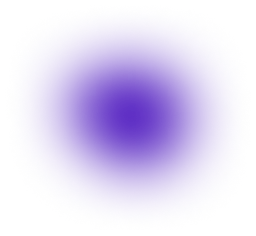
How BigFile Achieves Unparalleled Scalability & Security
The core of the BigFile protocol is our custom Layer 2 (L2) network, the BigFile Chain. To solve the classic blockchain trilemma of achieving scalability without sacrificing decentralization or security, we have chosen the most advanced architecture available today: a ZK-Rollup, built with the powerful Polygon Chain Development Kit (CDK).
This document breaks down how our L2 architecture works and why it provides a superior foundation for the future of decentralized storage and AI.
The Problem with Layer 1s: The Congestion Bottleneck
Traditional Layer 1 (L1) blockchains like Ethereum are incredibly secure and decentralized, but they have a fundamental limitation: every node in the network must process every single transaction. This creates a traffic jam, leading to slow confirmation times and prohibitively high gas fees, making high-volume applications like the BigFile marketplace unfeasible.
The Solution: Moving Execution Off-Chain
A ZK-Rollup solves this by moving the hard work—the execution of thousands of transactions—off the congested L1 mainnet and onto our efficient L2, the BigFile Chain. The L1 is then only used for what it does best: providing ultimate security and finality.
Here are the key components that make this possible:
1. The Sequencer: The L2 Traffic Controller
- What it does: When you submit a transaction on the BigFile network (e.g., paying for storage), it is sent to a specialized node called the Sequencer. The Sequencer's job is to receive thousands of these L2 transactions, order them, and bundle them into compressed "batches." This provides users with near-instant transaction confirmations.
- Why it matters: By ordering transactions on our own high-performance chain, we are not limited by the 12-second block times or the gas limits of Ethereum. We can process transactions as fast as our network allows.
2. The Prover: The Engine of Mathematical Proof
- What it does: This is where the "ZK" (Zero-Knowledge) magic happens. A powerful, specialized node called the Prover takes the batches created by the Sequencer and performs a massive computation to generate a single, tiny, cryptographic proof known as a ZK-proof (specifically, a ZK-SNARK or ZK-STARK).
- The Guarantee: This ZK-proof is a mathematical guarantee that every single transaction within the batch was executed correctly according to the protocol's rules. It proves the final state of the chain is valid without revealing any of the underlying private data.
3. The Verifier Contract: The Judge on Ethereum L1
- What it does: The ZK-proof generated by the Prover is then submitted to a special smart contract on the Ethereum mainnet, called the Verifier Contract.
- The Efficiency: This contract's only job is to perform a very quick and cheap calculation to verify the mathematical integrity of the proof. It doesn't need to re-execute the thousands of individual transactions; it just needs to check the Prover's math.
- Why it matters: Once the proof is verified on Ethereum, the entire batch of thousands of BigFile transactions is considered final and inherits the full, immutable security of the Ethereum network.
The Benefits of this Architecture
This ZK-Rollup model provides a powerful combination of features that are perfectly suited for the BigFile vision:
- Massive Scalability: By moving execution to our L2, we can achieve a throughput of thousands of transactions per second (TPS), enabling a vibrant, high-volume marketplace for storage and AI compute.
- Radically Low Costs: Bundling thousands of transactions into a single L1 proof dramatically reduces the cost per transaction, making micro-payments and frequent interactions economically viable.
- Ethereum-Grade Security: We don't compromise on security. By settling our state on Ethereum, we are protected by the largest and most secure smart contract network in the world.
- Fast Finality: Unlike Optimistic Rollups which have a long "challenge period," ZK-proofs are a guarantee of validity. This allows for much faster finality and quicker withdrawals from the L2 to the L1.
- Privacy by Design: ZK-proofs allow for verification without revealing sensitive data, a critical feature for our future private computation and storage solutions.
